1961 Mercedes-Benz Ponton 180Db
~ former diesel taxi restored to classic status ~
owner: Ratko Radanov ratkoradanov@a1.net /
Austria
Dear readers, I found the Mercedes-Benz Ponton website by browsing
the internet and I would like to add my contact and story about my 1961
180Db sedan to it.
In 1998, a friend of mine (Mr. Gustav Sombori) "donated" (to me) a
1961 Mercedes-Benz Type 180Db Ponton sedan, which he originally planned to restore
himself. Due to the fact that he had no time to perform the work himself and the professional
shops wanted high amounts of money to do it, he decided to get rid of the car. The first time
I saw it, I was not very optimistic about ever getting it back on the road (see photos
5-7, below)
but the good thing was that none of the major parts were missing. Also, all original documents
were still with the car (photos 1-4).
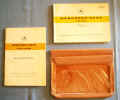


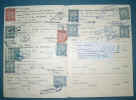
Photos 1-4. original documentation
The history of ownership is:
08.Feb.1961 to 13.May.1964 - Taxi Company / Grüner, Himberg.
13.May.1964 to 29.Jul.1964 - Private owner: Hugo Ludwig, Waltersdorf.
29.Jul.1964 to 01.Apr.1974 - Restaurant Taschler, Biedermannsdorf.
25.Apr.1974 to 23.Jul.1976 - Private owner: Josef Kellner, Biedermannsdorf.
27.Jul.1976 to 07.Mar.1978 - Private owner: Johann Ferstl, Tattendorf.
06.Dec.2002 to present - Private owner: Ratko Radanov.
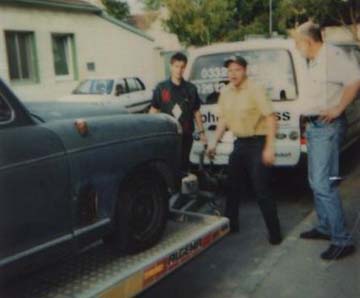
Photo 5. flatbed / 1998
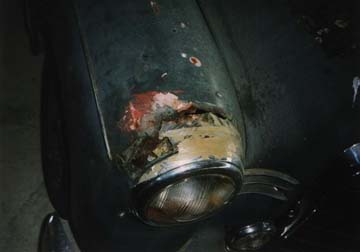
Photo 6. fender rust / 1998
Editor's Note: The polished aluminum
"brightwork" accent strip on the fender (visible in Photo 6) was not
standard on the 4 cylinder Ponton models (Type 180 and 190 sedans).
It was not offered as an "extra cost option" from the factory. This was
an option installed at the request of the owner by local Mercedes-Benz agents
after the car left the factory. There are several examples of this option on
various cars in the Ponton Photo Gallery.
Further, the 6 cylinder W180 Ponton models (Type 220S and 220SE) did include
this fender trim as standard. The 6 cylinder W180 Type 220a Ponton sedan only
had it on the rear fenders, and the W105 Type 219 sedans (6 cylinder engine,
Bakelite interior trim, and shorter rear doors) did not include any fender accent
trim as factory original. The trim certainly enhances the appearance of the car
but purists look down on such modifications. At this point in time, it should be
considered a rare period appointment worthy of preservation.
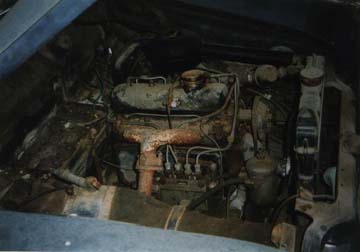
Photo 7. engine bay / 1998
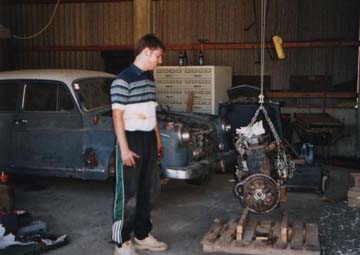
Photo 8. engine removed / 2001
After two years of collecting parts and doing preparation work, in 2001 the engine was
removed and the chassis repair work was started (photos 8-10).
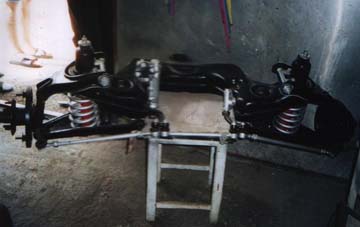
Photo 9. suspension restoration work / 2001
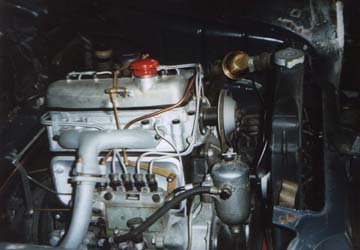
Photo 10. engine rebuilt / 2001
After the restoration, the original diesel engine is in very good condition and
running perfectly. Total km = 699, 425 = 436, 614 miles.
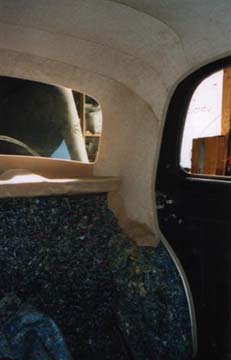
Photo 11. interior restoration / 2002
In 2002, the interior of the car was restored (photo 11) and in March 2003, the first test drive
was carried out at the Punitz airport (photo 12).
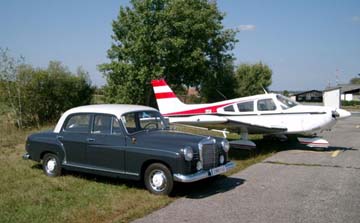
Photo 12. first test drive / 2003
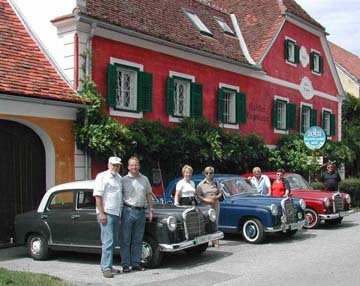
Photo 13. gathering of Ponton friends
Stubenbergsee, GH Rieglbauer, Austria
Since 2003, I have participated in many "oldtimer" meetings in Austria, Croatia, Slovenia, Hungary and Italy without any troubles and/or technical problems
(photos 13-23). The average distance I drive during a year is about 5,000 km and I hope that the original engine which is still in the car will keep on working
for a long time to come.
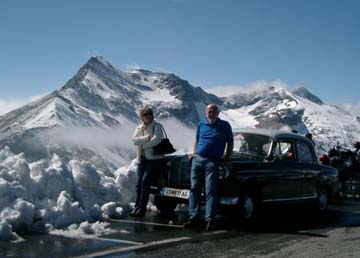
Photo 14. Grossglockner, Austria / 2,847 m
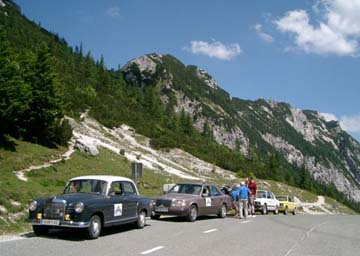
Photo 15. Vrsic Pass, Slovenia
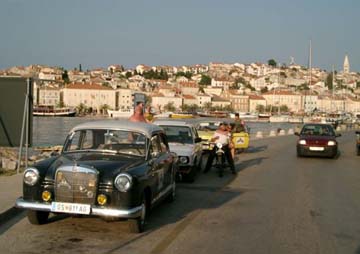
Photo 16. Mali Losinj, Croatia
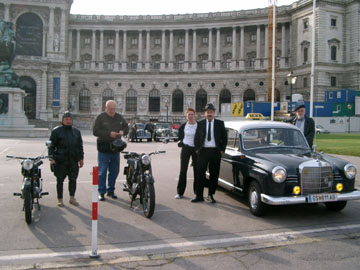
Photo 17. Vienna, Austria
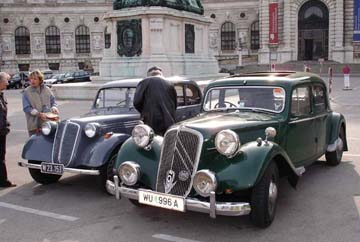
Photo 18. Vienna, Austria
Left: 1950 Tatra 57B, Right: 1949 Citroen 15/6.
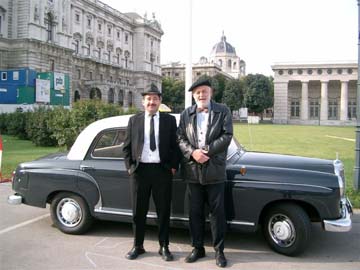
Photo 19. Vienna, Austria
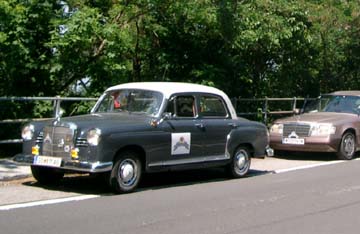
Photo 20. Miramare, Trieste, Italy
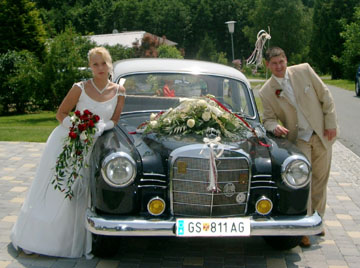
Photo 21. St. Michael, Austria
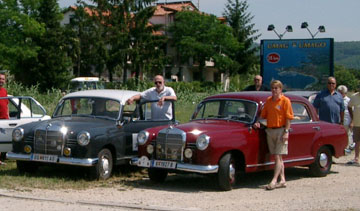
Photo 22. Portoroz, Slovenia
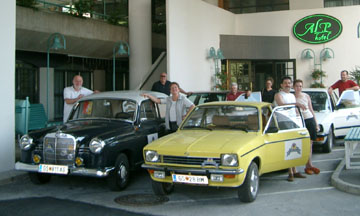
Photo 23. Bovec, Slovenia
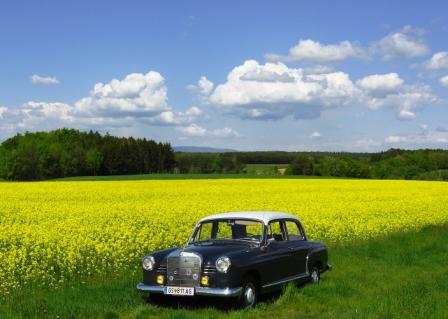
Photo 23. Rapeseed field / July 2008
Editor's Note (source: Wikipedia / July 23, 2008):
Rapeseed oil is used in the manufacture of biodiesel for powering motor vehicles.
Biodiesel may be used in pure form in newer engines without engine damage, and is
frequently combined with fossil-fuel diesel in ratios varying from 2% to 20% biodiesel.
Formerly, owing to the costs of growing, crushing, and refining rapeseed biodiesel,
rapeseed derived biodiesel cost more to produce than standard diesel fuel.
Prices of rapeseed oil are at very high levels presently (start November 2005)
owing to increased demand on rapeseed oil for this purpose. Rapeseed oil is the
preferred oil stock for biodiesel production in most of Europe, partly because
rapeseed produces more oil per unit of land area compared to other oil sources,
such as soy beans.
Created: November 27, 2005 / Jeff Miller
© www.mbzponton.org
Return to the Type 180 Photo Gallery
Return to the Main Photo Gallery























